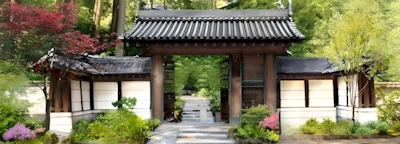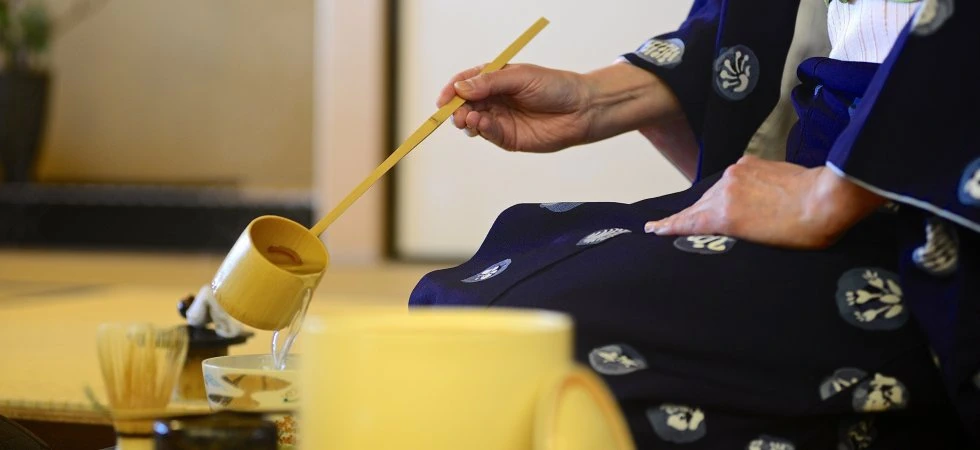2023 Japanese Tea Ceremony (One of the Most Ancient & Revered Arts in Japan, At the Very Heart of Japan House, is Chado, Also Known as the Way of Tea)NEW
Other Events At This Location
Japan House (Japanese Garden, Tea Garden, Tea Rooms, Dry Garden) University of Illinois at Urbana-Champaign
This Specific Event Date Has Passed
Urbana, IL 61802 USA
Chado, or the Way of Tea, is one of the most ancient and revered arts of Japan and is at the very heart of Japan House. It is a ceremonial way of preparing and serving matcha tea that benefits both the host and the guest through mutual respect, non-verbal communication, and a calmness, or sense of peace, away from everyday life.
There are many different variations of this revered 500-year-old art form. Traditionally, guests sit in the seiza posture on the tatami mats (kneeling with legs folded underneath and resting on the heels). There is also a variety of tea ceremony in which one sits on a chair while drinking the tea called Ryūrei style, or table-style tea ceremony.
Historically in Japan, people didn't use chairs. They sat on the floor for most everything, even to eat meals. The Ryūrei style of tea ceremony was created by Gengensai Seichū (1810-1877), the 11th head of the Urasenke school of tea ceremony, for an exposition held in 1872 in Kyoto. Many foreigners visited Japan at this time, so the government requested that an effort be made to modify the traditional form of tea ceremony as a way of making it more accessible.
The main feature of Ryūrei style is that both host and guests sit on a chair. The seiza posture is no longer used, but utensils are used in the same way as in a normal tea ceremony. Although this one aspect of the ceremony is altered, the Ryūrei style is otherwise the same as a tea ceremony performed using the seiza posture. Even Japanese people, who use the seiza posture much less than in the past, embrace the Ryūrei style of tea ceremony because it places less of a burden on the legs.
We will be alternating weekly between Ryūrei, (sitting on chairs), and sitting traditionally on tatami mats.
Ryūrei style - Seated on chairs
What To Expect
After a brief tour that includes history of Japan House on the campus of the University of Illinois and information on the tea ceremony, watch as the host carefully and thoughtfully prepares each piece of equipment, chosen specifically for that day and season. Each guest will be served wagashi, a traditional seasonal Japanese sweet, and matcha tea in a unique handmade chawan, or tea bowl. Experience a moment of tranquility while learning about proper guest etiquette and the hundreds of years of tradition carried through tea ceremony.
Afterward, there will be time for guests to ask questions, as well as to shop from a wall of unique Japanese-inspired treasures that are part of our annual Bazaar sale. Cash and credit cards accepted.
Tea ceremonies will feature a variety of special handmade sweets, or wagashi, using recipes from the cookbook "The Art of Wagashi: Recipes for Japanese Sweets that Delight the Palate and the Eyes" written by Japan House Professor Emeritus Kimiko Gunji. The cookbook will be available for purchase.
Reservations are required, no walk-in’s or observers will be allowed due to limited space inside. Space is limited to 18.
All guests will be asked to remove shoes upon entering, and to wear clean, white socks (we have some to lend you if you forget). We ask that attendees dress modestly and legs be covered as is traditional in Japan. Please do not be late - once the tea ceremony begins, entry will not be permitted as it is disruptive to the experience.
FAQs
Why is tea ceremony served Ryūrei (table style) and not the traditional style on the tatami mats?
• In order to accommodate guests of all ages and ranges of mobility, we offer a style of tea ceremony where all guests sit on chairs. Tea ceremonies where guests sit on tatami are held on alternating Wednesdays.
What are my transport/parking options getting to the event?
• Japan House is located in the Arboretum at the University of Illinois at 2000 S. Lincoln Avenue between Kirby/Florida and Windsor Road. Parking is available in the lot to the north of Japan House (F-31 at St. Mary's Road and Lincoln) and to the south of Japan House (F-32 on Lincoln across from the Vet Med complex).
Spaces are marked with a placard and must be paid with Mobile Meter or Park Mobile (https://parkmobile.io/ ) phone apps, or by calling 217-207-3033. After 5pm and weekends all parking spaces are free!
There are bike racks near both parking lots. The MTD Raven comes near Japan House on Lincoln Ave.
The front door is located on the north side of the building. Please allow plenty of time to park and get to the front door so we may start on time.
Disclaimer: Please double check all information provided on our platform with the official website for complete accuracy and up-to-date details.
Wednesday, 6 December, 2023
Event Contact
Japanese Tea CeremonyEvent Organizer Website
Visit Organizer Website
Get More Details From the Event Organizer
Event Location Website
Visit Location Website
For More Location Details
Event Information Can Change
Always verify event information for possible changes or mistakes.Contact Us for Issues

















